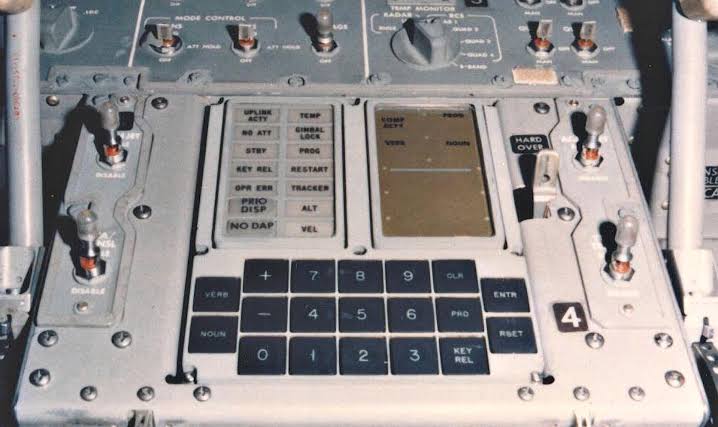In the summer of 1969, Apollo 11 set its sights on the Moon, determined to achieve what was once thought impossible – landing humans on its surface and bringing them back safely to Earth. At the core of this pioneering mission was the Apollo Guidance Computer (AGC), a technological marvel that would steer the spacecraft and its crew through the vastness of space.
The AGC, a compact digital wonder created by MIT’s Instrumentation Laboratory in collaboration with NASA, was a crucial player in this daring lunar expedition. Its primary function was to provide precise guidance, navigation, and control for the spacecraft. Equipped with a mere 2 kilobytes of RAM and 36 kilobytes of ROM, it might seem modest by today’s standards, but back then, it was cutting-edge technology.
As Apollo 11 approached the Moon, things seemed to be going smoothly. The astronauts were getting closer to their lunar destination, but the landing site presented unexpected challenges – a rugged terrain scattered with boulders. As the Lunar Module, Eagle, descended, the AGC faced an unexpected burden. The computer’s processing load surged as it attempted to handle the flood of data from the sensors.
The situation reached a critical point when a “Program alarm” sounded, signaling a memory overload issue. It looked like the mission might be in jeopardy. But the astronauts, Neil Armstrong and Buzz Aldrin, remained cool-headed. Armstrong quickly switched to manual control, taking the reins of the Lunar Module.
Guided by his instincts and training, Armstrong skillfully guided the Lunar Module to a safer landing spot, avoiding the treacherous boulders. The AGC’s memory challenge was averted, thanks to the human decision-making at the helm.
With the Lunar Module now on the Moon’s surface, Neil Armstrong famously radioed back to Mission Control, “Houston, Tranquility Base here. The Eagle has landed.” The world erupted in jubilation as Apollo 11 achieved a historic lunar touchdown.
But the memory mishaps didn’t end there. During their moonwalk, Buzz Aldrin accidentally broke off a critical circuit breaker that controlled the ascent engine, essential for their return to the Command Module orbiting above.
In a remarkable display of resourcefulness, the astronauts improvised a solution. Using a simple felt-tip pen, they managed to activate the switch and secure their journey home. It was a testament to human adaptability and quick thinking in the face of unexpected challenges.
Thanks to the AGC’s redundancy features and the astronauts’ composure, the Apollo 11 mission was a resounding success. Neil Armstrong and Buzz Aldrin etched their names in history as the first humans to walk on the lunar surface.
As we reflect on this iconic mission, let’s remember the Apollo Guidance Computer and its role in propelling us beyond the boundaries of Earth. Apollo 11 remains a shining example of human exploration, pushing the limits of technology and human ingenuity.
And so, as we gaze at the Moon and the stars above, let’s cherish the memory of that unforgettable day in 1969 when mankind achieved a giant leap into the cosmos.
